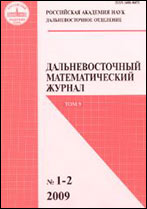|
|
Dal'nevostochnyi Matematicheskii Zhurnal, 2016, Volume 16, Number 2, Pages 209–222
(Mi dvmg334)
|
 |
|
 |
This article is cited in 1 scientific paper (total in 1 paper)
Thermodynamically consistent equations of the couple stress elasticity
V. M. Sadovskii
Institute of Computational Modelling, Siberian Branch of the Russian Academy of Sciences, Krasnoyarsk
Abstract:
To describe motion in a micropolar medium, with the concurrent translational degrees of freedom and independent particle rotations, it is chosen to use natural measure of curvature that is a strain state characteristic independent of deformation method. It is shown that the common Lagrangian curvature measure with the rate of change equal to a tensor of angular velocity gradients is only applicable under geometrically linear approximation. The nonlinear constitutive equations of the couple stress theory are constructed using the method of internal thermodynamic parameters of state. The linearization of these equations in isotropic case yields the Cosserat continuum equations, where material resistance to the change in curvature is characterized by a single coefficient as against the three independent coefficients of the classical theory. The complete system of equations for the dynamics of a medium with couple stresses under finite strains and particle rotations reduces to a thermodynamically consistent system of laws of conservation. This system allows to obtain the integral estimates that guarantee the uniqueness and continuous dependence on the initial data of solutions of the Cauchy problems and the boundary-value problems with dissipative boundary conditions.
Key words:
elasticity, Cosserat continuum, couple stresses, curvature tensor, thermodynamically consistent system.
Received: 23.09.2016
Citation:
V. M. Sadovskii, “Thermodynamically consistent equations of the couple stress elasticity”, Dal'nevost. Mat. Zh., 16:2 (2016), 209–222
Linking options:
https://www.mathnet.ru/eng/dvmg334 https://www.mathnet.ru/eng/dvmg/v16/i2/p209
|

| Statistics & downloads: |
| Abstract page: | 320 | | Full-text PDF : | 107 | | References: | 51 |
|




 Contact us:
Contact us: Terms of Use
Terms of Use
 Registration to the website
Registration to the website Logotypes
Logotypes








 Citation in format
Citation in format 
